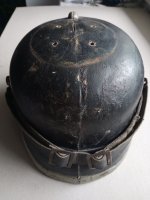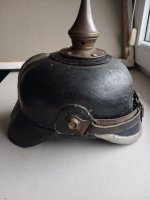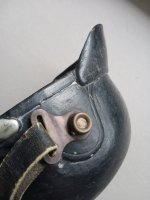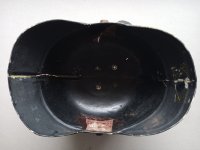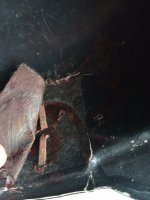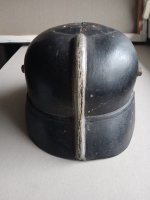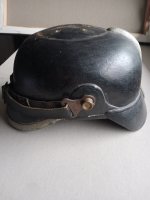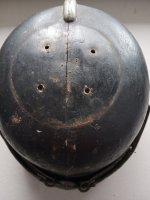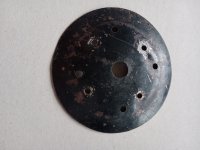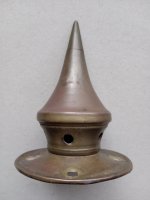Welcome gentlemen. I have been in possession of this pickelhaub for several years and I am constantly wondering what it could be? It is made I would call it "old plastic" but it is not vulcan fiber. It is quite well reproduced, there are seams and even the rounding of the leather on the back peak. It looks like a period item and I don't know what application it was, if it was used in the theater, although in my opinion it is too carefully made for that. Hope to help with identification. Best regards.
You are using an out of date browser. It may not display this or other websites correctly.
You should upgrade or use an alternative browser.
You should upgrade or use an alternative browser.
What could it be? Plastic pickelhaube...
- Thread starter johny
- Start date
Peter_Suciu
Well-known member
The first plastics were developed at the end of the 19th century, but molded plastic didn't begin until after the Second World War. It would have been very difficult to produce this before WWI.
My guess is that it is a movie prop, and possibly for a more recent film. Ever since the 1990s, the quality of film props has greatly increased.
My guess is that it is a movie prop, and possibly for a more recent film. Ever since the 1990s, the quality of film props has greatly increased.
Dziękuję za bliższe przyjrzenie się tematowi. Spike i knopfy są mosiężne. Lata 90. raczej odpadają, bo Pickelhaubego mam od 20 lat i był w takim samym stanie jak na zdjęciach, zaczep typu knopp też mocno skorodowany. Materiał różni się od nowoczesnego plastiku, nie jest tak elastyczny, jest twardy i kruchy i nie będzie papier-mache. Płytka wygląda jak oryginalna oficerska, ale ma wywiercone w niej dodatkowe otwory. Przed wojną znany był już celuloid, z którego robiono zabawki, grzebienie itp.
Attachments
pickelhauben
Well-known member
Looks to me that it has a seam down the center of the entire helmet going through the rear spine.
So my guess would be a movie prop or life sized model kit of some sort.
Post war.
So my guess would be a movie prop or life sized model kit of some sort.
Post war.
ww1czechlegion
Well-known member
Dziękuję za bliższe przyjrzenie się tematowi. Spike i knopfy są mosiężne. Lata 90. raczej odpadają, bo Pickelhaubego mam od 20 lat i był w takim samym stanie jak na zdjęciach, zaczep typu knopp też mocno skorodowany. Materiał różni się od nowoczesnego plastiku, nie jest tak elastyczny, jest twardy i kruchy i nie będzie papier-mache. Płytka wygląda jak oryginalna oficerska, ale ma wywiercone w niej dodatkowe otwory. Przed wojną znany był już celuloid, z którego robiono zabawki, grzebienie itp.
Translation to English:
Thank you for taking a closer look at the topic. Spike and knopfy are brass. The 90s rather fall off, because I have Had Pickelhaube for 20 years and it was in the same condition as in the pictures, the knopp hook is also heavily corroded. The material is different from modern plastic, it is not so flexible, it is hard and brittle and there will be no papier-mache. The tile looks like the original officer's, but has additional holes drilled in it. Before the war, celluloid was already known, from which toys, combs, etc. were made.
Peter B
Well-known member
Bakelite was another forerunner to plastic. Developed by a Belgian Chemist in 1907.Translation to English:
Thank you for taking a closer look at the topic. Spike and knopfy are brass. The 90s rather fall off, because I have Had Pickelhaube for 20 years and it was in the same condition as in the pictures, the knopp hook is also heavily corroded. The material is different from modern plastic, it is not so flexible, it is hard and brittle and there will be no papier-mache. The tile looks like the original officer's, but has additional holes drilled in it. Before the war, celluloid was already known, from which toys, combs, etc. were made.

